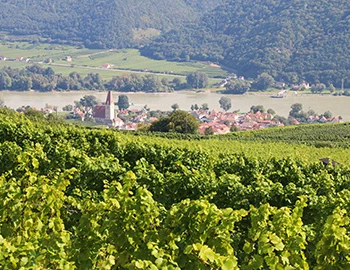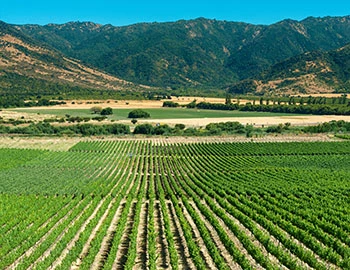Murcia
Murcia: Home to the Monastrell variety
The city of Murcia is scarcely known outside of Spain; however, with nearly 500,000 inhabitants, it is the powerful center of a rural region. Fruit, vegetable and wine cultivation are still important economic factors here. In the three wine-growing areas located in the autonomous region of Murcia – Bullas, Jumilla and Yecla – the Monastrell variety demonstrates that it can produce wines of varying character.
Red wines from Murcia
Sweet wines from Murcia
Spirits from Murcia
A mighty cathedral and spectacular Baroque buildings show that the city of Murcia has been able to create remarkable prosperity within its agrarian environment. The rice grown near the city of Calasparra enjoys an outstanding reputation – as does, of course, the wine. As throughout the Spanish Levant, the Monastrell variety also sets the tone here. Until 20 years ago, vintners produced very heavy wines with high alcohol and tannin contents from long-established varieties. A large proportion of the young wines were openly sold and used in the upgrading of wines from other regions.
Viticulture is part of the ecosystem
In the area of the Autonomous Region of Murcia, there are three wine-growing regions with DO status – in all three, Monastrell still plays the main role. The long-established planting has integrated well into the prevailing ecosystem here, which in the driest areas corresponds to a semi-desert type. Thus, the old vineyards here manage with minimal precipitation levels of less than 300 millimeters per year per square metre, and without artificial irrigation.
In total, the region of Murcia is planted with an impressive 35,000 hectares of vines. The three growing areas are lined up between Andalusia to the southwest and Valencia to the northeast. The Jumilla DO, with a cultivated area of 26,000 hectares, plays the undisputed leading role, followed by the Yecla DO’s 6,000 hectares and the Bullas DO, with 2,500 hectare
Higher locations, more elegant wines
The high altitude in which the grapes ripen is decisive for the wine styles here. While extremely dense and concentrated wines with a warm fruit fullness result from lower altitudes from 300 to 500 metres above sea level, plants which mature between 600 and 800 metres above sea level demonstrate more structure and elegance. In coastal areas, the climate is pronouncedly Mediterranean and balanced. With increasing distance from the coast, the continental influence intensifies, which is perceptible in the strong temperature variations between the seasons, and between the days and nights in the summer.
Besides Monastrell, premium wines increasingly result from varieties like Tempranillo, Petit Verdot, Cabernet Sauvignon and Syrah. The cuvées are particularly interesting, with native Monastrell and international varieties are both represented.











